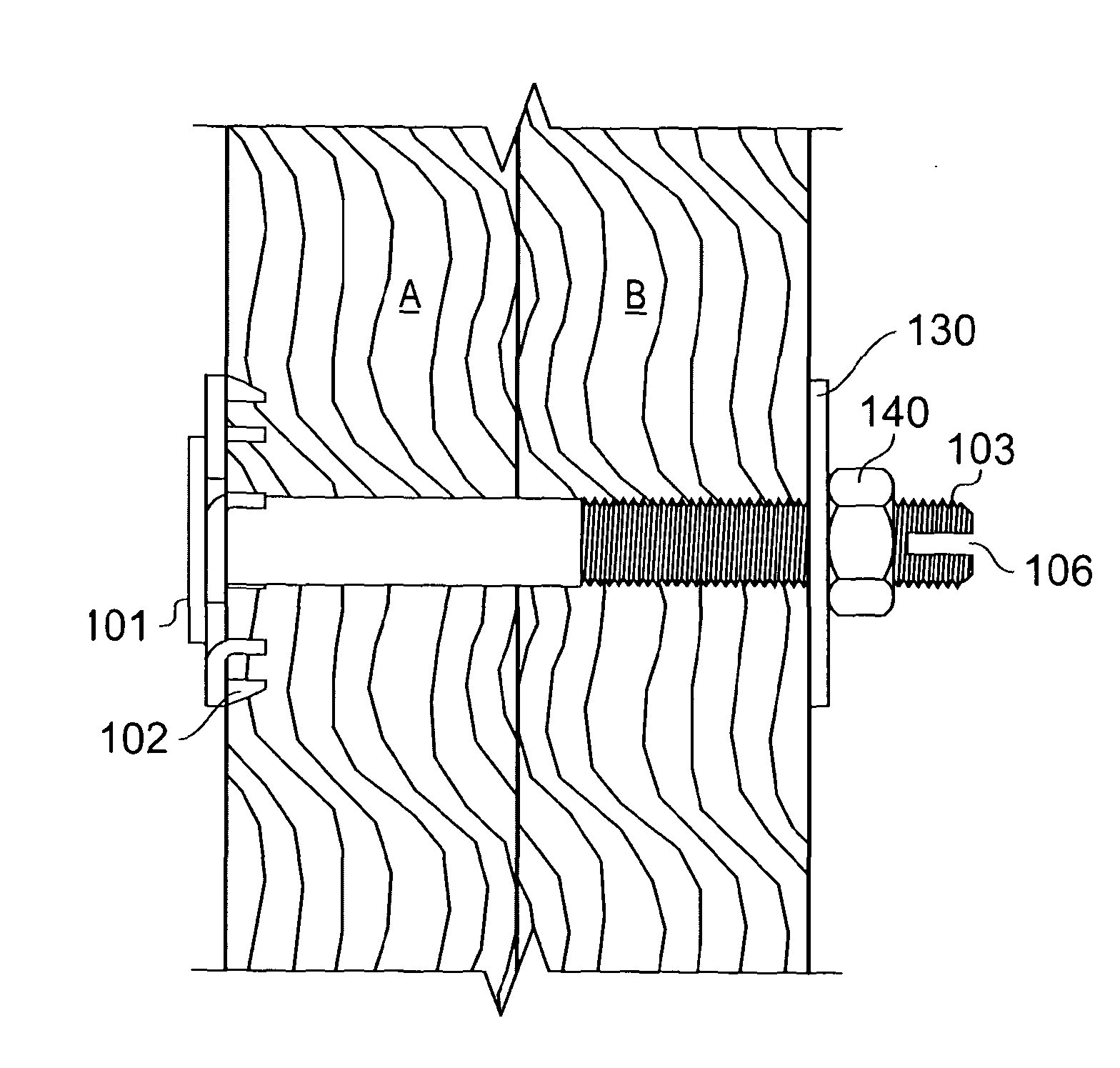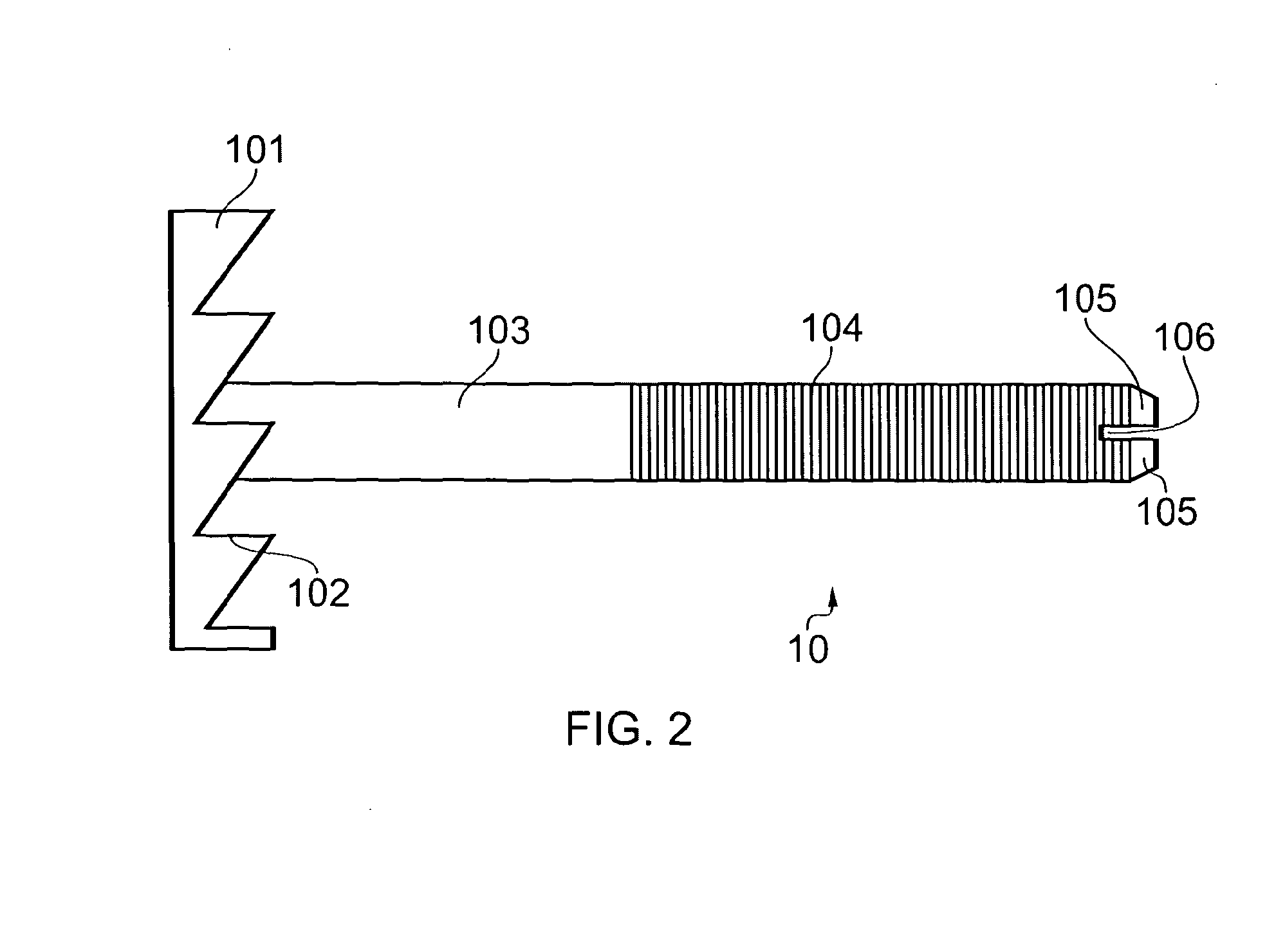Bolt
a technology of bolts and bolts, applied in the direction of bolts, nuts, screws, etc., to achieve the effect of reducing material use, reducing time, and facilitating erecting of buildings and structures
- Summary
- Abstract
- Description
- Claims
- Application Information
AI Technical Summary
Benefits of technology
Problems solved by technology
Method used
Image
Examples
Embodiment Construction
[0067]Referring to the Figures generally and specifically FIGS. 1 and 2 which show a bolt 10, suitable for securing timber. Bolt 10 comprises a bolt head 101 with a series of spiked engagement means, in the form of teeth 102 on its underside. A cylindrical bolt rod 103 extends from the bolt head 101. A portion of the shaft of the bolt rod 103 has a thread 104 formed thereon. The end of the bolt rod 103 is split into two portions 105a and 105b at its free end, defining a slot 106 between the two portions 105a and 105b.
[0068]Bolt head 101 may be of any known bolt head form, for example, it may be a pan head, a domed head, a round head, a truss head or any other, but is ideally square shaped. The bolt head 101 includes a plurality of spiked teeth 102 on its underside, which, in use, contact a work piece to be secured. Spikes 102 are sufficiently sharp to pierce the timber and thus grip onto it.
[0069]FIG. 3 shows in diagrammatical form the bolt holding two pieces of wood A and B togeth...
PUM
| Property | Measurement | Unit |
|---|---|---|
| Length | aaaaa | aaaaa |
| Length | aaaaa | aaaaa |
| Length | aaaaa | aaaaa |
Abstract
Description
Claims
Application Information
 Login to View More
Login to View More - R&D
- Intellectual Property
- Life Sciences
- Materials
- Tech Scout
- Unparalleled Data Quality
- Higher Quality Content
- 60% Fewer Hallucinations
Browse by: Latest US Patents, China's latest patents, Technical Efficacy Thesaurus, Application Domain, Technology Topic, Popular Technical Reports.
© 2025 PatSnap. All rights reserved.Legal|Privacy policy|Modern Slavery Act Transparency Statement|Sitemap|About US| Contact US: help@patsnap.com



